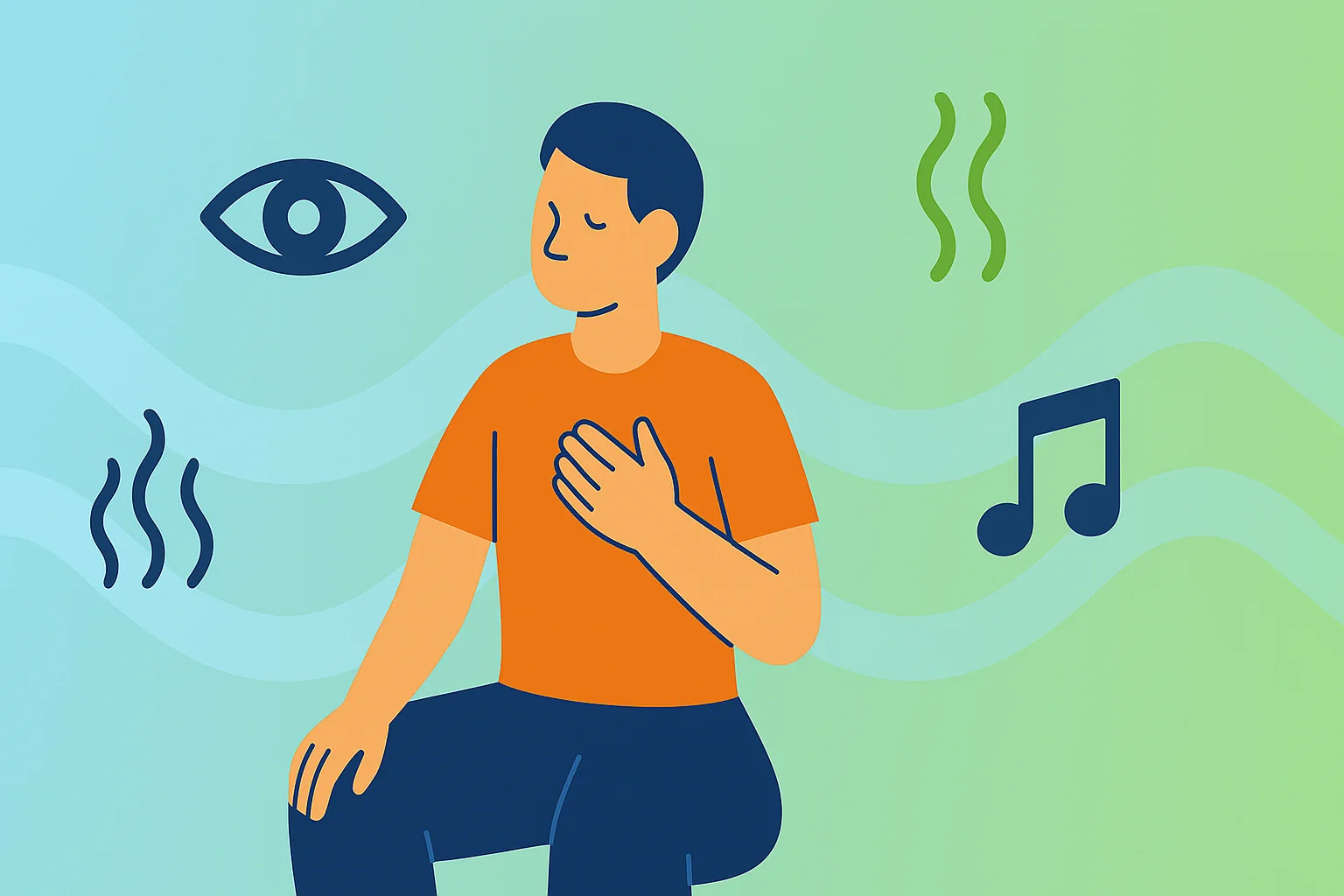Picture this: your living room lights dim ever so slightly in the evening, a faint lavender scent drifts in from a diffuser, and your smartwatch delivers a gentle vibration that encourages you to pause and exhale. None of these changes demand your attention, yet together they create a shift. Your shoulders soften, your breath slows, and your body receives the message that it’s time to rest.
This is the emerging world of sensory microinterventions—small, carefully designed stimuli delivered through our senses with the goal of nudging the nervous system toward balance. Instead of asking us to dedicate an hour to meditation or a full workout, these interventions slip quietly into daily life. They ask very little, but the cumulative effects could be profound.
The Science of Small Signals
Our senses are not passive receivers; they constantly shape our physiology and emotional state. Researchers describe microinterventions as strategies that are “targeted, timely, and minimally invasive,” designed to integrate seamlessly into everyday routines.
The evidence is still young, but compelling. In one pilot trial, spending half an hour in a sensory room equipped with calming lights, textures, and sounds measurably increased parasympathetic activity, a physiological marker of relaxation. Other studies in long-term care have shown that older adults exposed to gentle sensory interventions—such as music, aromas, or tactile stimulation—reported improvements in quality of life. And in mental health settings, outpatient clinics experimenting with sensory modulation found that patients learned new ways to manage anxiety through simple cues like weighted blankets, soothing sounds, or safe scents .
Even technology is joining the movement. An mHealth trial with healthcare professionals tested apps that delivered individualized sensory cues—small vibrations or calming prompts—in moments of stress. While biomarkers didn’t change dramatically, the participants reported feeling more supported and more consistent in their daily routines.
How It Works
The power of these interventions lies in timing and subtlety. A scent released before bed can signal the brain that sleep is approaching, much like dimming lights helps align circadian rhythms. A vibration on the wrist can prompt a pause in the middle of a hectic day, giving the nervous system space to recalibrate. Even brief exposure to multisensory environments—lights shifting in tone, music slowing in tempo—can gently stimulate the vagus nerve and tip the balance toward parasympathetic calm.
Cross-modal research adds another layer. A fascinating experiment with vestibular stimulation, for example, showed improvements in visual perception thresholds, suggesting that stimulating one sense can ripple across others. In practice, this means that a single cue—say, a touch or sound—may influence multiple systems at once.
Everyday Experiments
You don’t need a lab or a specialized device to test the idea. People already use lavender scents at night, soft background music during work, or gradual lighting shifts to signal evening wind-down. These are microinterventions, even if we don’t call them that. What distinguishes the modern approach is intentional design and personalization. The cues aren’t random; they’re chosen to target specific moments of stress, fatigue, or distraction.
Think of the office worker who uses a short audio chime to mark transitions between tasks, or the student who sets her lamp to shift color as midnight approaches, reminding her body it’s time for sleep. None of these require effortful discipline. They work because they slip beneath the radar of willpower and engage the senses directly.
The Promise and the Caution
The promise is seductive: a life where wellness comes not from adding more routines, but from embedding subtle supports into the routines we already have. The challenges are real, though. Many studies are preliminary, and results vary widely between individuals. Overuse of sensory cues may even dull their effect, while poorly designed interventions risk becoming just another layer of distraction. Ethical questions also linger about data privacy and commercialization: if companies control your sensory environment, whose wellbeing is being optimized?
Still, the potential is hard to ignore. The nervous system is exquisitely sensitive, and even the smallest signals can create real shifts when delivered with precision.
The Takeaway
Sensory microinterventions are not meant to replace therapy, exercise, or nutrition. But they remind us of something important: our senses are gateways to wellbeing. By paying attention to the subtle cues of light, sound, scent, and touch, we can design environments that support calm, focus, and resilience.
In a culture obsessed with big fixes, perhaps the future of wellness lies in the smallest signals—the kind you hardly notice, but your body never forgets.
References
- Abdalla, Y., Gatti, E., Orlu, M., & Obrist, M. (2025). Sensory-driven microinterventions for improved health and wellbeing. arXiv. arXiv+1
- Otsuka, H., Irie, K., Kogata, T., Onitsuka, A., & Inadomi, H. (2025). Effects of sensory room intervention on autonomic function in healthy adults: a pilot randomized controlled trial. PLOS One. PLOS
- Backman, C., Demery-Varin, M., Cho-Young, D., Crick, M., Squires, J. (2021). Impact of sensory interventions on the quality of life of older adults in long-term care. BMJ Open. BMJ Open+1
- Forsberg, K., Sutton, D., Stjernswärd, S., Bejerholm, U., & Argentzell, E. (2025). Implementation of a sensory modulation intervention in mental health outpatient services: process evaluation. BMC Psychiatry. BioMed Central
- Baumann, H., Heuel, L., Bischoff, L.L., Wollesen, B. (2023). Efficacy of individualized sensory-based mHealth interventions to improve distress coping in healthcare professionals: randomized trial. Sensors. MDPI
- Voros, J.L., Sherman, S.O., Rise, R., et al. (2021). Galvanic vestibular stimulation produces cross-modal improvements in visual thresholds. arXiv. arXiv
- The combined effect of multisensory stimulation and therapist support for mental health and chronic pain. ScienceDirect. ScienceDirect

